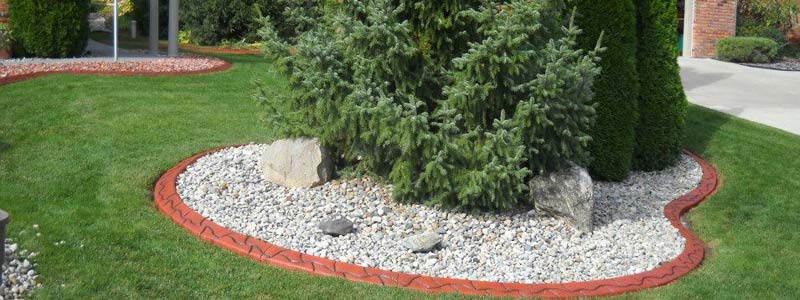to Use For Landscape Edging

We hope you’re excited about the turning of the weather as much as we are. Even better, we hope you’re looking forward to handling some landscape projects to compliment your yard. Specifically, we are thinking about your landscape edging projects. Some edging materials are easier to work with than others. In this article, we are going to talk about some of the best materials to try and their biggest pros and cons.
Brick edging offers a classic home another layer of class. You can choose the same type of brick for a seamless style or go with another contrasting color to compliment your home’s exterior. Using brick is also an easier material to work with since it has consistent dimensions. This helps with planning and patterning. You can preplan how much you need and often don’t need mortar to keep bricks in place.
Some Pros in Using Brick Landscape Edging:
- Usually a material that is readily available.
- Can be repaired easily if you choose a classic color.
- Easy to manage and not too awkward to handle.
- Easy dimensions making layouts a snap.
Some Cons in Using Brick landscape Edging:
- Limited color pallet, usually only red or orange tones.
- More color options with paint but would require more upkeep.
- Hard to use on tight landscape curves.
Natural materials add a different kind of aesthetic to a home and are a good match for rustic styles. This is a great chance to find reclaimed wood to work with if you’re eco-minded. There are a ton of wood edging options on the market like railroad ties, wood planks, wood poles, and plenty more. If you’re seeking something that “blends” with your landscape this would be an ideal material. Wood tends to make your landscaping efforts pop rather than more contrived options.
Some Pros of Wood Landscape Edging
- Natural product that blends with other landscape materials well.
- Readily available in new and reclaimed versions.
- Natural aesthetic for wildflower style gardens or rustic homes.
- There are plenty of products and ways to lay wood landscape edging.
- Eco-friendly when choosing reclaimed wood.
Some Cons of Wood Landscape Edging
- Not Eco-friendly when buying new wood.
- Can deteriorate faster than other types of materials.
- Needs repaired or replaced more often.
- Can be susceptible to weather and bugs if not using the right wood.
For a truly polished landscape edge, concrete pavers or pours are a popular choice. Concrete is a sustainable and recyclable product for homeowners who are eco-minded too. Concrete landscape edging also lasts longer than other options and gives your plants and trees some guidance for growing. This is also a great material if you need a mowing buffer that will help you stay clear of your more delicate plants or shrubs.
Some Pros of Concrete Landscape Edging
- Concrete can be poured to precise measurements and angles.
- Can be matched in color to compliment your home’s exterior.
- Concrete can withstand a substantial amount of weathering.
- Concrete is a sustainable product.
Some Cons of Concrete Landscape Edging
- Concrete pavers are less precise and can be heavy to work with.
- A concrete pour is more permanent which limits landscape makeovers.
- A concrete pour may require professional help and therefore cost more.
Another popular option for homeowners is stonework. This type of design can take on all kinds of types and sizes. Some people might opt for large boulders that line larger trees and property perimeters. Others might choose to work with smaller stones and pebbles to create water features in their yards. Either way, stone is a more natural-looking material and compliments yards that are aiming for that sort of style.
Some Pros of Stone Landscape Edging
- Stone comes in a variety of colors and sizes depending on your project.
- Stone or river rock is an ideal border for water features.
- Using this material gives a home instant high-end curb appeal.
Some Cons of Using Stone Landscape Edging
- Large pieces may be hard to move or work with.
- Some stone is harder to find or replace.
- Stone materials tend to be higher priced than other materials.
- Stone projects can feel like doing a puzzle to get it just right.
There are other materials that people use to edge their landscaping with such as metal, plastic, and glass. We choose these five as they are typically easier to find and offer the most consistent aesthetic for today’s homeowner.
